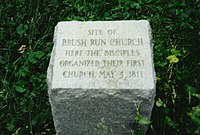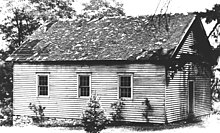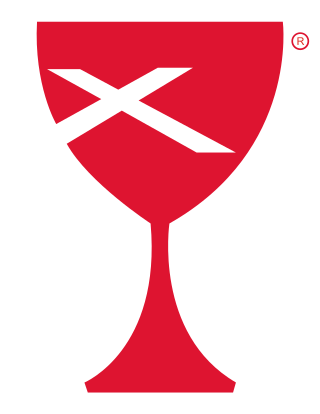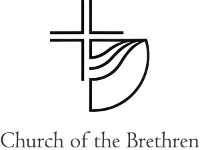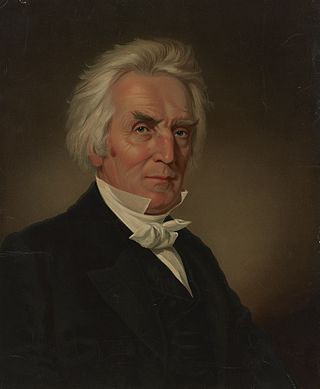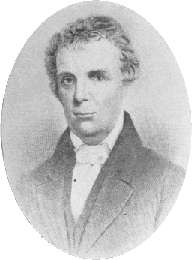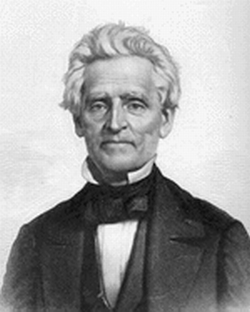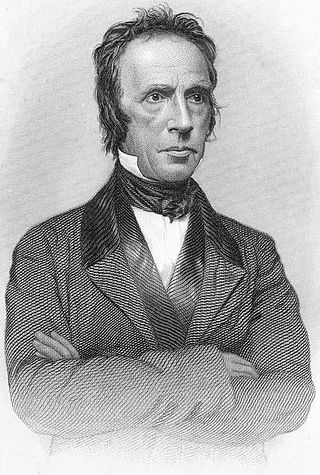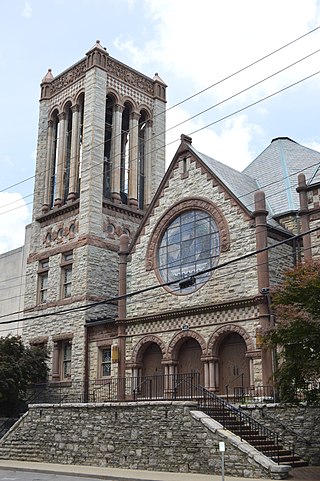History of the church
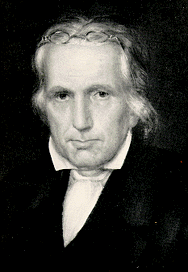
In 1809, Thomas Campbell, a "seceder" Presbyterian minister who had emigrated from Scotland to western Pennsylvania, established the Christian Association of Washington as a result of his groundbreaking theological treatise, entitled " The Declaration and Address of the Christian Association of Washington." On May 4, 1811, the Association reconstituted itself as a congregationally governed church. It constructed a meeting house which became known as the Brush Run Church. [1] : 117 It, along with the Cane Ridge Meeting House in Paris, KY, is considered to be one of the first churches in the Christian group which later became known as the Christian Church (Disciples of Christ). [1] : 117
For nearly fifteen years the Brush Run Church served as the principal worship and communion location for the Thomas Campbell (father) and Alexander (son) inspired and led portion of an American frontier reform movement called at various times and in varying locations: The New Reformation; The disciples of Christ; the Reformers; the Primitive New Testament Church; the Restoration Movement; the Brotherhood; the Church (or Churches) of Christ; the Campbellites; the Christians—as well as other labels attempting an identification depicting the central message or emphasis of the Movement.
At the first meeting in the Brush Run Church, June 16, 1811, three people requested immersion. Inasmuch as they had not previously been sprinkled Thomas Campbell baptized them. The birth of Alexander Campbell's first child, March 13, 1812, made the question of infant baptism of vital importance to him. He restudied the whole question and became convinced that infant baptism is without New Testament sanction. He decided that the child should not be sprinkled. This raised a further question in his mind. If infant baptism is without New Testament sanction, then one who was sprinkled in infancy has not been baptized. On June 12, 1812, Thomas and Alexander Campbell, their wives, and three others were immersed by a Baptist preacher (Rev. Mathias Luce) in Buffalo Creek on a simple confession of faith in Christ.
Alexander Campbell seems to have taken the lead from this time. It was not long until most of the members of the Brush Run Church had been immersed, and this brought them favor with the Baptists. Alexander Campbell visited the Redstone Baptist Association shortly after he had been immersed, but was not favorably impressed. During the year, however, he visited among the Baptist churches and formed a more favorable opinion. After much discussion the Brush Run Church made application to the Redstone Association in the autumn of 1813 for admission. They presented a lengthy statement of the conditions under which they would be willing to unite with the Association. They formally accepted the Philadelphia Confession, provided they be allowed to preach and teach whatever they learned from the Holy Scriptures "regardless of any creed or formula in Christendom."

A majority of the Redstone Association voted to receive the Brush Run Church on the basis of its statement. Some of the ministers protested, insisting that such a course was to invite trouble. There were many fundamental points of difference between the Brush Run Church and the regular Baptist churches, and these were gradually to become more pronounced. In 1816 Alexander Campbell preached his famous Sermon on the Law, in which he maintained that we are under the new covenant, and hence must be guided by the New Testament rather than the Old Testament.
After Alexander Campbell's marriage to Miss Margaret Brown, her father deeded him a fine farm, which is now the site of Bethany, West Virginia. This provided him a living so that he was free to travel among the churches where he was received with great favor. John Walker, the pastor of the Presbyterian Church of Mount Pleasant, Ohio, had challenged Mr. Birch, who was pastor of the Baptist Church in that place, or any other Baptist preacher, to debate the subject of baptism. Alexander Campbell was urged to accept this challenge, and the debate was held June 19 and 20, 1820. His success in this debate made him many friends among the Baptists especially in the Mahoning Association where the debate was held.
Because of increased opposition on the part of some of the leaders of the Redstone Association, Alexander Campbell and some others withdrew from the Brush Run Church and established a church in Wellsburg in 1823. This church was received into the Mahoning Association in Ohio. In 1823 Mr. Campbell debated the subject of infant baptism with W. L. Maccalla in Mason County, Kentucky. As a result of this debate his popularity increased, and he was urged to make a tour of the Baptist churches of Kentucky. Thus his influence was extended in those sections where the Disciples were to have the greatest strength when they became separated from the Baptists. [2]
According to Leroy Garrett, the Brush run church existed until about 1828, at which time it moved into Bethany. [3]
